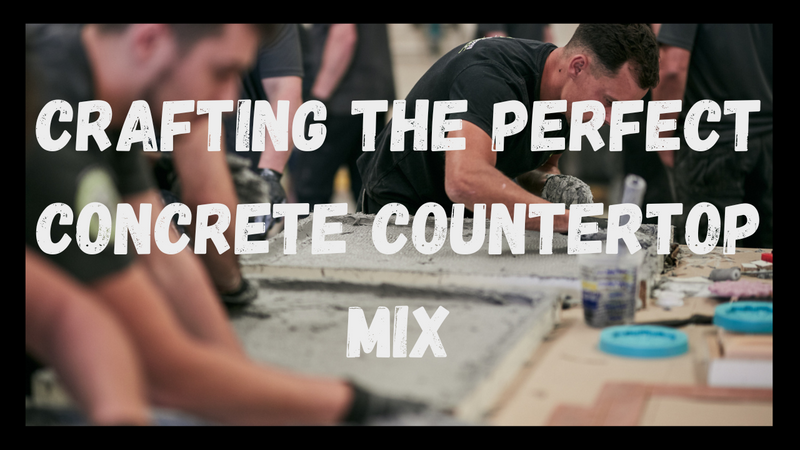Concrete countertops have gained immense popularity in recent years, and for good reason. They bring a unique blend of durability, aesthetics, and a touch of modern sophistication to your kitchen or bathroom. To embark on this creative journey, understanding the key components within the concrete countertop mix is essential. In this blog post, we'll delve into the ingredients, processes, and what you can expect when working with concrete countertop mix.
Ingredients of a Concrete Countertop Mix
1. Portland Cement: The heart of any concrete mix, Portland cement acts as the binder. It's available in various types, such as Type I, II, and III, each with distinct properties for different applications. Some artisans even have a preference in the colour of cement they use. At Polcrete, we always lean towards white cement due to numerous factors, one if which is that we have greater control over the colour and pigment loading when starting from a lighter base.
2. Aggregate: Typically, fine silica sand of variable grades and crushed stone are used as aggregates. The choice of aggregate size and type can affect the final look and texture of your countertop.
3. Water: The right amount of water is crucial to achieve the desired consistency in your mix. Too much or too little can lead to problems with workability and strength. The amount of water used in your really depends on the application method and desired outcome.
4. Additives: Depending on the specific mix, additives like plasticisers, accelerators, shrinkage reducers, or superplasticisers may be included to enhance the performance of the concrete.
5. Reinforcement: Steel fibres, glass fibres and glass scrim may be added to reinforce the countertop, making it more resistant to cracking.
The Process: Crafting Your Concrete Countertop Mix
1. Measure and Mix: Precise measurement of ingredients is key. Start by measuring out your cement, sand, and any additives. Mix the dry components thoroughly before adding water. Slowly add water and mix until you achieve a workable, lump-free consistency. Be patient – mixing can take a few minutes.
2. Form Building: Construct a mold or form for your countertop. This is where your creativity shines. The form can be custom-made or use prefabricated ones. Ensure the form is level and well-sealed to prevent leakage.
3. Pouring: Carefully pour the mixed concrete into the form. To minimize air bubbles, use a vibrating table or gently tap the sides of the form with a rubber mallet. This step helps in achieving a smoother surface.
4. Curing: Cover the countertop with plastic or wet curing blankets to maintain moisture levels. Proper curing is essential for strength and durability.
5. Demolding and Polishing: Once the concrete has cured (usually after a few days), carefully remove the form. Now, you can unleash your creativity by polishing the countertop to your desired finish. You can expose aggregate, create a glossy finish, or experiment with various textures.
6. Seal & Finish: The final step in the production of GFRC is to apply a tried and tested sealer to guarantee robust finish, capable of standing up to everyday spills and scuffs. A solvent based concrete sealer such as Seal Hair will guarantee a food safe surface which is virtually indestructible!
What to Expect:
1. Unique Aesthetics: Each concrete countertop is one-of-a-kind. Expect subtle variations in colour and texture, which add character to your space.
2. Durability: Concrete countertops are incredibly durable when properly sealed and maintained. They can withstand everyday wear and tear.
3. Customisation: You have the freedom to customise your countertop to fit your design preferences, including colour, texture, and shape.
4. Maintenance: Regular sealing and proper care are necessary to keep your concrete countertop looking its best and extending its lifespan. We recommend using Baby Seal Wax for an easy maintenance method; simply spray the wax onto the concrete and polish off with a microfibre cloth as you would with a traditional furniture polish.
In conclusion, mastering the concrete countertop mix is a delightful blend of art and science. With the right ingredients, meticulous processes, and a dash of creativity, you can create a unique and long-lasting centerpiece for your kitchen or bathroom. So, roll up your sleeves, get ready to experiment, and craft a concrete countertop that's truly your own.

